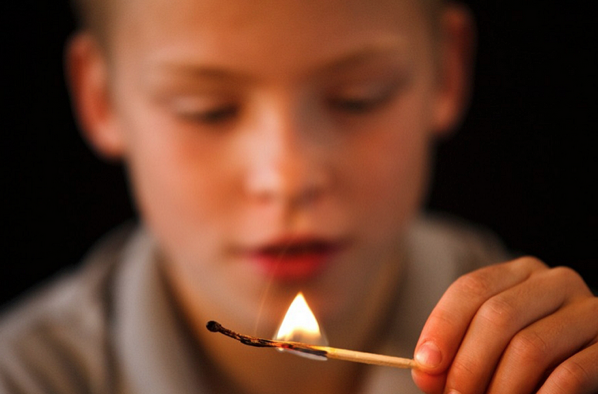
14 Apr FIRE SAFETY AROUND CHILDREN IN SYDNEY
Sydney Extinguishers wants to know would you know what to do if a fire started in your home? Would your kids? Take the time now to review the fire safety facts and tips listed below so your family will be prepared in the event of a fire emergency in your Sydney home.
Fire Prevention
Of course, the best way to practice fire safety is to make sure a fire doesn’t break out in the first place. That means you should always be aware of potential hazards in your home.
Start by keeping these simple and common sense tips in mind:
Electrical Appliances, Cords, and Outlets
- Are your electrical appliances in good condition, without loose or frayed cords or plugs?
- Are your outlets overloaded with plugs from the TV, computer, printer, video game system, and stereo?
- Are you overusing an extension cord?
- Do the light fixtures in your home use bulbs that are the correct wattage?
- Does your home contain surge or fault circuit interrupters, these help prevent electrical shock and fire by shutting off faulty circuits?
Look around your house for potential problems. And unless you’re a trained electrician, be careful about do-it-yourself electrical projects. Studies have shown that many home fires are caused by improper installation of electrical devices.
Other tips:
- Replace RIGHT AWAY any appliances that spark, smell unusual, or overheat.
- Don’t run electrical wires under rugs.
- Make sure lamps and night-lights are not touching bedspreads, drapes, or other fabrics.
- Use caution when using electric blankets especially with children.
- Don’t let kids use kitchen appliances by themselves and supervise any art or science projects that involve electrical devices.
- Cover any outlets that are not in use with plastic safety covers if you have toddlers or young children in your home.
Heaters
The number of residential fires always goes up during colder months, peaking between May and August. Heaters substantially contribute to this increase. Before plugging in your heater, make sure you know how to use it safely:
- Carefully read the directions for its use.
- Never place a space heater where a child or pet could accidentally knock it over.
- Never place a space heater too close to a bed, especially a child’s bed.
- Keep newspapers, magazines, and fabrics from curtains, clothes, or bedding away from space heaters, radiators, and fireplaces.
- Heaters should be at least 4 feet from anything flammable.
Careful in the Kitchen
Did you know that cooking is the leading cause of home fires in the Sydney? The kitchen is full of ways for a fire to start: food left unsupervised on a stove or in an oven or microwave; grease spills; a dish towel too close to the burner; a toaster or toaster oven flare-up; a coffee pot accidentally left on.
Always supervise kids while cooking and practice safe cooking habits — like turning all pot handles in so they can’t be accidentally knocked over and not wearing loose-fitting clothing that could catch fire around the stove.
Check the Fireplace
Fireplaces should be kept clean and covered with a screen to keep sparks from jumping out. Only wood should be burned in the fireplace — paper and other materials can escape while burning and ignite nearby items. Never leave a fire burning unattended and make sure a fire is completely extinguished before leaving the house or going to bed. Have your chimney professionally cleaned once a year.
Matches and Lighters
You’ve heard it again and again, but playing with matches is still the leading cause of fire-related deaths and injuries for kids younger than 5. Always keep matches and lighters out of children’s reach. Store flammable materials such as gasoline, kerosene, and cleaning supplies outside of your home and away from kids.
Use Candles Safely
As decorative candles become more popular, candle fires are on the rise. If you light candles, keep them out of reach of kids and pets, away from curtains and furniture, and extinguish them before you go to bed. Make sure candles are in sturdy holders made of non-flammable material that won’t tip over. Don’t let older kids and teens use candles unsupervised in their rooms.
Be Aware of Holiday Dangers
Around the holidays, there are even more potential fire hazards to think about. If you use a real Christmas tree in your home, make sure to water it daily — electric lights strung on a dried-out tree are a recipe for disaster. All lights and lighted window ornaments should be inspected every year to make sure that cords are not worn or frayed, and all candles should be used with care.
Teaching your Kids the Facts About Fire Safety
Unfortunately, many kids will try to hide from a fire, often in a closet, under a bed, or in a corner. But if taught basic fire facts, they’d be better able to protect themselves.
Teach your kids that fires spread quickly, that most fire-related deaths are not from burns but from smoke inhalation, and that dangerous fumes can overcome a person in just a few minutes.
Sydney Kids should learn to:
- cover their mouths and noses with a moist towel or an article of clothing to keep out dangerous fumes while evacuating
- crawl under the smoke to safety, staying as low to the ground as possible (smoke always rises)
- touch any door (not the doorknob) to see if it is hot, and if it is, not to open it — find another exit
- locate the nearest stairway marked “Fire Exit” if they live in an apartment building, or a fire escape if the stairway isn’t accessible — kids should know to always avoid elevators during a fire
- never stop to take personal belongings or pets or to make a phone call (even to 000) while evacuating
- never go back into a burning building once safely outside
- stop, drop, and roll to extinguish flames if an article of clothing catches on fire or use a fire blanket
Kids should also always be dressed for bed in flame-retardant sleepwear.
Practice Fire Drills at Sydney Homes
Kids have fire drills at school and adults have them at work. Why shouldn’t you have them at home, too? Not being funny but they take 5 minutes and benefit everyone. Fires are frightening and can cause panic especially in children. By rehearsing different scenarios, your family will be less likely to waste precious time trying to figure out what to do.
Planned escape routes are a necessity, especially if a fire were to occur during the night. Go through each room in your house and think about the possible exits. You should have in your mind two escape routes from each room, in case one is blocked by fire. Inspect the room to make sure that furniture and other objects are not blocking doorways or windows.
Make sure that the windows in every room are easy to open and are not painted over, nailed shut or locked— remember, these may be your only way out in a fire. Be sure to know the locations of the closest stairwells or fire escapes and where they lead.
Discuss and rehearse the escape routes you’ve planned for each room of your home. Designate a meeting place outside your house or apartment building that is a safe distance away (a mailbox, a fence, or even a distinctive-looking tree will do) where everyone can be accounted for after they escape.
Then, every so often, test your plan. Use your finger to set off the smoke detector and let everyone know it’s time for a fire drill. See if everyone can evacuate your home and gather outside within 3 minutes — the time it can take for an entire house to go up in flames.
Be sure any babysitters in your home know all escape routes and plans in case of a fire.
For more information regarding fire safety in Sydney please call Sydney Extinguishers. Thanks for reading – Sydney Extinguishers love Fire Safety
